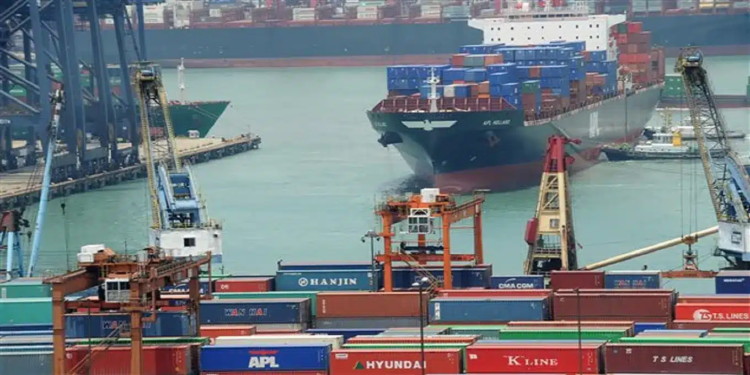The Tunisian trade balance deficit reached -18.435 billion dinars at the end of October 2025, compared to -15.716 billion a year earlier, according to the latest data published by the National Institute of Statistics (INS). This decline in the external balance is explained by a faster increase in imports than exports.
A decreasing coverage rate
The coverage rate of imports by exports stood at 73.9%, compared to 76.7% during the same period of 2024. Energy remains the main factor in the imbalance, with an energy deficit of -9,181.5 million dinars (MD), followed by raw materials and semi-finished products (-5,191.8 MD), capital goods (-2,927 MD) and consumer goods (-1,769.1 MD).
Only the food sector recorded a surplus of +633.6 MD, slightly attenuating the overall deterioration. Excluding energy, the deficit stands at -9,254.3 MD.
Exports: a timid increase driven by the mechanical industries
Tunisian exports increased by 1.1% to reach 52,214 MD over the first ten months of the year. This growth remains modest and heterogeneous depending on the sector:
- Mines, phosphates and derivatives: +9.4%
- Mechanical and electrical industries: +7.7%
- Energy: -29.2%, due to the drop in sales of refined products (790.5 MD against 1,646.4 MD)
- Agri-food: -13.8%, pulled down by the fall in olive oil exports (3,062.1 MD against 4,175.1 MD)
- Textiles, clothing and leather: -0.9%
Exports to the European Union, representing 70.5% of the total, increased to 36,787.9 MD (+2.7%), driven by Germany (+10.7%), France (+9.6%) and the Netherlands (+6.4%). On the other hand, they fell towards Italy (-8.1%) and Spain (-16.7%).
Towards Arab markets, sales increased to Libya (+4.4%), Morocco (+36.1%), Algeria (+10.4%) and Egypt (+35%).
Imports: strong growth in capital goods and manufactured products
Imports totaled 70,649.8 MD, an increase of 4.9% compared to 2024 (67,339.7 MD). The main increases concern:
- Capital goods: +14.5%
- Raw materials and semi-finished products: +6.7%
- Consumer goods: +10.9%
On the other hand, energy imports fell by -9.3%, and food products by -5.7%.
With the European Union (43.3% of the total), imports increased to 30,586.6 MD, notably with France (+11.8%) and Germany (+8.1%), but fell with Italy (-1.2%), Greece (-29.8%) and Belgium (-8%).
Outside the EU, China (+25.1%) and Turkey (+13.6%) strengthened their trade with Tunisia, while imports from Russia (-19.4%) and India (-4.9%) decreased.
Read also








